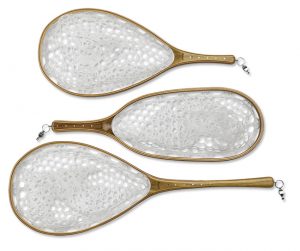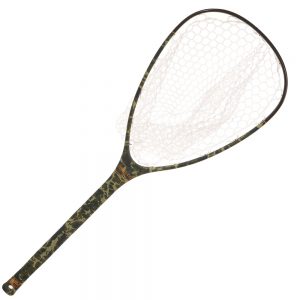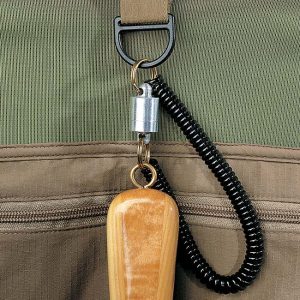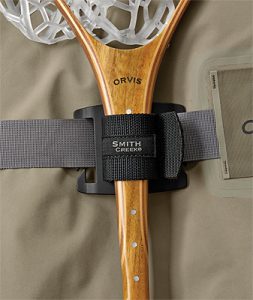
Landing nets are designed to enable anglers to land a fish more easily and safely. They are most beneficial when dealing with larger fish that have a tendency to make one last dart or head shake when you try to grab them, often resulting in the tippet breaking. While in the Smokies, I rarely carry a net because the fish are typically not very large and can be landed by hand with very little trouble, and a net is just one more thing to carry. But I use a net regularly when fishing tailwaters and delayed harvest streams.

Traditionally, nets have been made with a wood frame and cotton netting and that style is still common today. However, wooden frames are more and more frequently being replaced by lighter, carbon frames and rubber is replacing cotton for the netting. The rubber netting has a number of advantages over cotton – the most notable being that it is better on the fish. Cotton netting has a tendency to get caught and tangled in the fins, gills and teeth of the fish and with trout, absorbs and removes some of their protective “slime.” Fly hooks also catch and easily tangle in cotton netting. Rubber netting eliminates all of these problems and holds far less odor than cotton.
Other things to consider when looking for a net are the size and shape. Obviously, if you’re expecting to catch bigger fish you’re going to want a bigger net. A 20-pound striper just won’t fit in a 16 ½” trout net. Landing nets are typically sized by the overall length, including handle, as well as the size of the head (the part that holds the netting). The size of the head should be chosen based on the size of fish you’re pursuing while the overall length (or the handle size) should be chosen based on how you will be pursuing them. For instance, if fishing from a boat, a longer handle may be desirable since it’s more difficult to get the fish close to you. If wading, a long handled net might be too cumbersome to carry all day.

If you plan to carry a net with you when wading, there are a number of options that will help keep the net out of the way, yet easy to access when needed. Most every fishing vest or jacket has a D-Ring on the back. The sole purpose of that ring is to clip your net on it. To make it even easier, there are magnetic connectors that include a section of plastic, “pig tail” type cord that allow you to utilize the net while it remains tethered to you. There are also oversized retractors that accomplish the same thing.

Folks who choose to use sling packs or hip packs tend to have trouble finding a suitable location for attaching their net. Attaching it to the pack with a traditional retractor or magnetic connector often leaves it hanging too low or in a location that impedes the casting stroke. I know many who have remedied this by using a type of net “holster” placed on a belt. The net is stored handle down and drawn from the holster when needed.
Like most things in fly fishing, there doesn’t seem to be a “one size fits all” solution to the type of net you use or the method you use to carry it. It’s a matter of finding something that best fits most of your needs and carrying it in the least obtrusive way possible.
